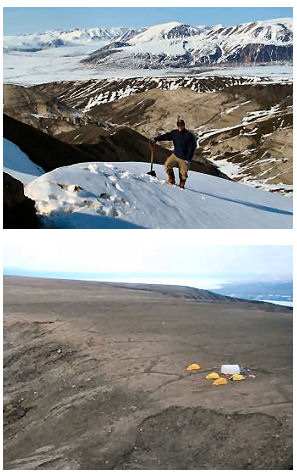
As the Arctic Ocean warms and ice-packs retreat, new routes will open up which will likely prove irresistible to shipping companies. A Northwest Passage and Northeast Passage through the Arctic Ocean would provide a distance savings of about 25 percent and 50 percent, respectively, with coincident time and fuel savings. But these new trade routes will come at a price as maritime engine exhaust particles will dramatically increase Arctic warming, according to a U.S. and Canadian research team.
“One of the most potent ‘short-lived climate forcers’ in diesel emissions is black carbon, or soot,” explains marine scientist James J. Corbett, from the University of Delaware. “Ships operating in or near the Arctic use advanced diesel engines that release black carbon into one of the most sensitive regions for climate change.”
Produced by the incomplete burning of marine fuel, these tiny particles of carbon absorb sunlight – both directly from the sun, and reflected from the surface of snow and ice. Other particles released by ship engines also rank high among important short-lived climate forcers, and this new study estimates their combined global warming impact potential.
To better understand the potential impact of black carbon and other ship pollutants on climate, including carbon dioxide, methane and ozone, the research team produced high-resolution scenarios that account for growth in shipping in the region through 2050, and also outline potential new Arctic shipping routes.
Significant findings in the study include:
- Global warming potential in 2030 in the high-growth scenario suggests that short-lived forcing of ~4.5 gigatons of black carbon from Arctic shipping may increase the global warming potential due to ships’ carbon dioxide emissions (~42,000 gigagrams) by between 17 and 78 percent.
- Ship traffic diverting from current routes to new routes through the Arctic is projected to reach 2 percent of global traffic by 2030 and to 5 percent in 2050. In comparison, shipping volumes through the Suez and Panama canals currently account for about 4 percent and 8 percent of global trade volume, respectively.
“To understand the value of addressing short-lived climate forcers from shipping, you need to know the impacts of these emissions, the feasibility and availability of technologies that could be put in place to reduce these impacts, and then engage the policy-making community to debate the evidence and agree on a plan,” Corbett notes. “Our hope is that this study will enable better communication of emerging science with policy makers and aid the eight Arctic Council nations with climate policy.”
Related:
Arctic Permafrost Not So Permanent
No end in sight for Alaskan coastal erosion
Arctic Heatwave Sends Climatologists Back To Drawing Board
Climate “Tipping Points” Identified


















Comments are closed.